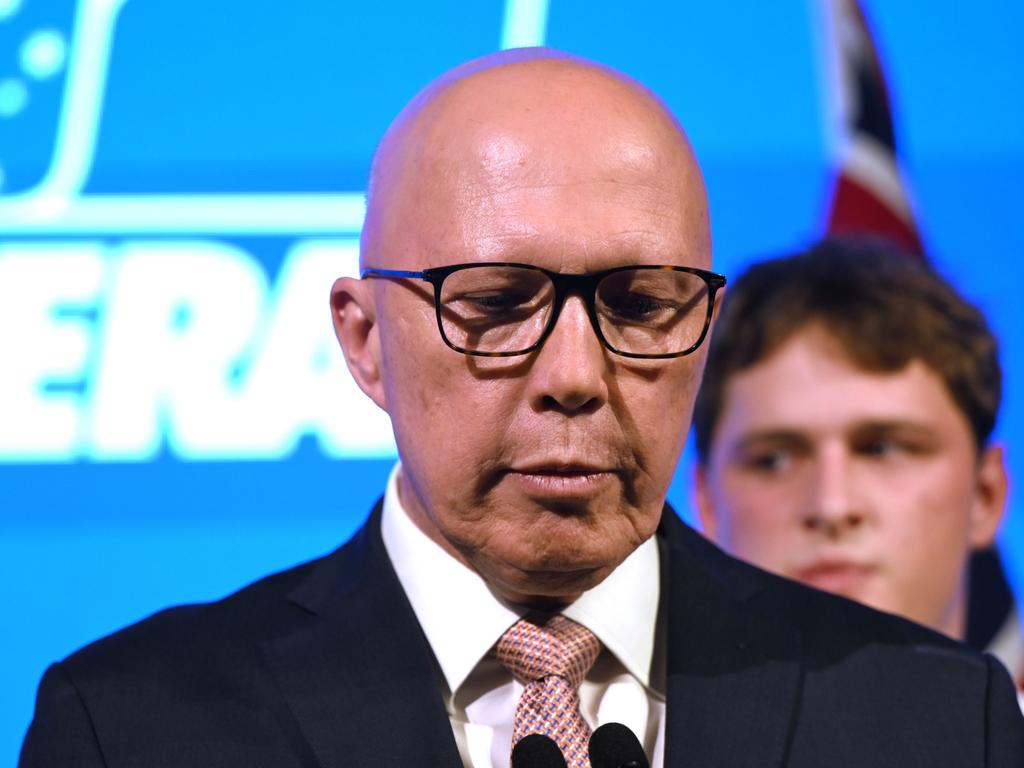
The average term in office for a federal opposition leader elected this century is 122 weeks.
Sussan Ley has served just seven of them and she can rest assured there will be harder ones to come.
The good news is that Labor’s domination of parliament is more fragile than it may appear.
A government that occupies 63 per cent of the chamber with less than 35 per cent of the vote is vulnerable to factionalism and changes in the public mood, as British Labour’s Keir Starmer has discovered.
Later this week, Starmer celebrates a year in office with a similar lukewarm mandate – 63 per cent of seats in Britain’s House of Commons on the back of 34 per cent of the popular vote.
Today, British Labour’s popularity has tanked a third to less than a quarter (23 per cent), according to the most recent YouGov poll.
Starmer is fighting off a backbench revolt over reforms to welfare payments. Commentators on the left and right are predicting he could face a leadership challenge within a year.
The bad news for Liberals searching for a flicker of promise is that few disaffected British Labour voters are turning to the Conservatives.
Last week’s poll puts Conservative support at 17 per cent, more than five points lower than at the general election. YouGov’s seat-by-seat analysis projects a devastating outcome for the Tories, who would be reduced to minor party status with just 46 MPs in the 650-seat parliament.
The party would lose a dozen seats to the Liberal Democrats and the Scottish National Party, but the big winner is Nigel Farage’s Reform UK. Reform would pick up 67 seats from the Conservatives and 194 seats from Labour, putting Farage in the box seat to become Britain’s next prime minister in a hung parliament.
In so far as British politics can be seen as a portent for Australia, Ley’s challenge is more complicated than it may have seemed.
She is the leader of the smallest Liberal contingent since World War II, and her first and not inconsiderable challenge will be to ensure it does not shrink further.
We should add the necessary caveats about such granular forecasting. Massaging the numbers, or multi-level regression and post-stratification polling as YouGov prefers to call it, is vulnerable to modelling assumptions, demographic data quality and last-minute voting behaviour changes.
Yet even if we give the Tories the benefit of the doubt and assume that the loss of, say, Faversham and Mid Kent to Reform is not a foregone conclusion, it is clear the electoral alignments that anchored parliamentary democracy in post-war Britain and Australia are broken beyond repair.

The illusion that a stable two-party system would survive under the Westminster system has been shattered. Inherited party loyalty is dead. Voters have become promiscuous and there is no such thing as a safe seat. The electorates have fractured along similar fault lines of age, sex and education.
Voters under 24 in Britain are more than three times likelier to vote for the Greens (22 per cent) than for the Conservatives (6 per cent). In the 65-plus bracket, the Tories are comfortably ahead of Labour (27 per cent to 12 per cent) but Reform beat them both with 36 per cent.
The myth that the Conservatives were the toffs’ party and Labour the party of flat caps, which was entrenched before the arrival of Margaret Thatcher, is shattered. Labour is the preferred party in the A, B and C1 demographics (26 per cent compared with 20 per cent). The C2S, Ds, and Es, however, are Farage’s people, with 36 per cent referencing Reform. The Brexit factor remains strong but the Conservatives have lost the edge. In April 2020, 53 per cent of Brexit voters favoured the Tories. Last week’s poll shows the Conservatives have retained the loyalty of just 23 per cent of Brexiteers. Most of them (51 per cent) back Reform.
By making a few adjustments for local circumstances, substituting the voice referendum for Brexit and adopting social class as a proxy for education, the pattern is eerily similar in Australia. The Labor vote across the past five years is historically low but relatively steady. Minor parties are polling strongly. The conservative vote has collapsed. The conservative brand is poison for younger voters, weakly endorsed by their parents and grudgingly supported by their grandparents.

One small but significant variation in the Conservative vote presents a glimmer of hope for Ley, who has made increasing the proportion of women in the Liberal partyroom a priority.
In Britain, women are likelier to vote Conservative than men by a margin of 2 percentage points. That may be the accumulated dividend of 14½ years under three Conservative female prime ministers and Kemi Badenoch’s eight months as Opposition Leader.
Yet it would be a mistake to imagine that feminising the frontbench will fix the party’s problems, any more than Badenoch has reversed the Conservatives fortune.
Badenoch’s biggest obstacle to becoming Britain’s next prime minister is not misogyny or racism but the stigma attached to conservatives, particularly among younger voters.
The urgency of the situation demands honesty. Balanced representation is important, as Nicolle Flint and I argued in our 2015 Menzies Research Centre report, Gender and Politics. Yet, with the best will in the world, it won’t happen overnight. The party’s fate will be decided by its ability to articulate its values across the next three years, not the chromosomal makeup of its partyroom. In an electorate more divided than ever on cultural issues, this is no easy task, as US electoral analyst Henry Olsen outlines in a sobering article in the latest edition of Quadrant. In attempting to appeal to two different constituencies – inner urban, university-educated voters on the cultural left and socially conservative voters in outer suburbs and regions – legacy conservative parties face a strong risk of losing both.

Olsen is pessimistic about the Conservatives’ future in Britain.
“They are now facing the possibility that their party, perhaps the most successful in world history, could cease to exist within a few short years,” he writes. “The Coalition may be only a few years behind the Tories in that process, but they are clearly on that course.”
Those who recognise that the Liberal Party has governed more consistently in the national interest than its rival since 1949 will be hoping Ley proves him wrong.







